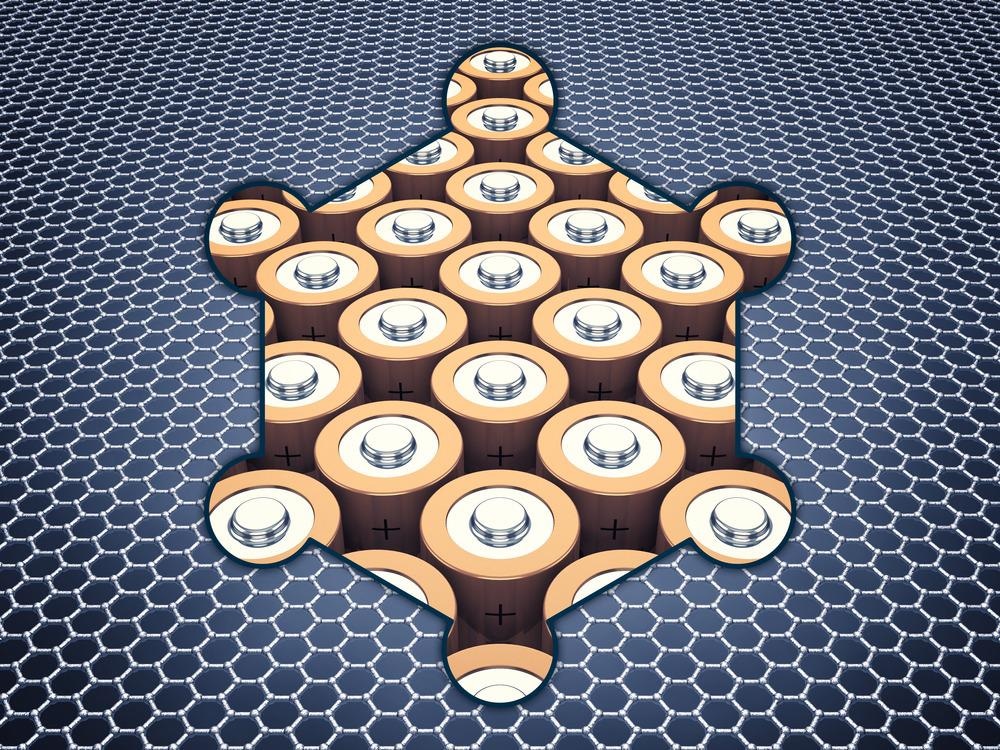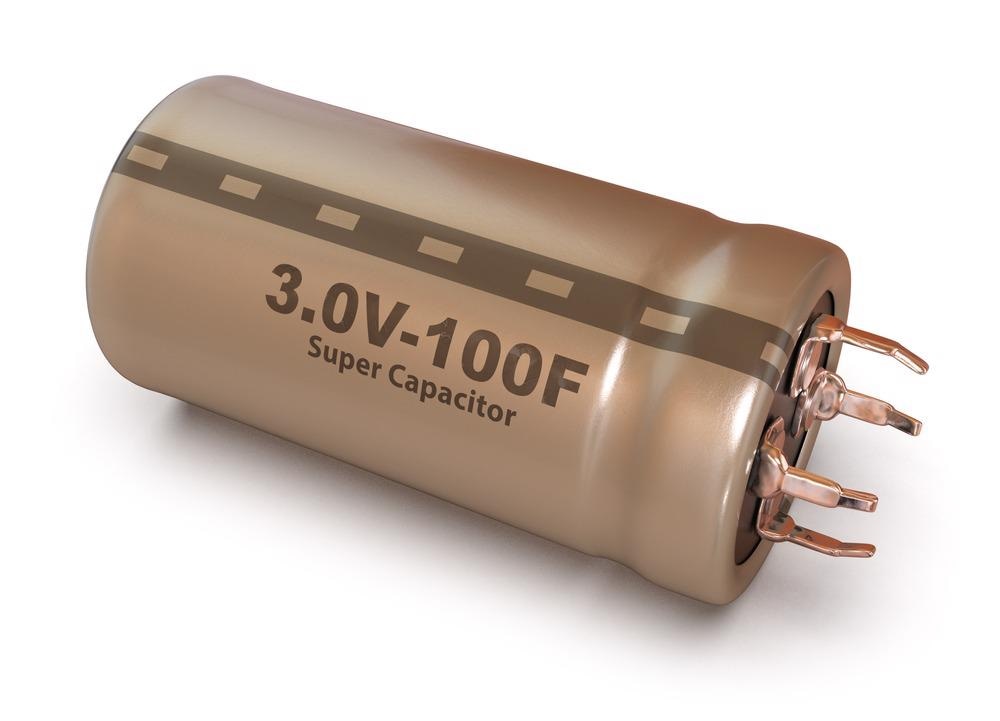This article reports on work where as-synthesized BCNTs are prepared by catalytic thermal Chemical Vapor Deposition (CVD) resulting in fast charge transfer between electrode and electrolyte.

Image Credit: nobeastsofierce/Shutterstock.com
The majority of supercapacitors could be classified as electrochemical double-layer capacitors (EDLCs). Such capacitors rely on efficient reduction-oxidation reactions for their functionality and making judicious selection of electrode material is important when building them.
Materials that extend cycle-stable life together with those that yield outstanding energy and power densities are among key properties constantly being sought to improve performance.
Active, three-dimensional (3D) materials meet the criteria, but to date there has not been any investigation into composite electrode materials for the supercapacitor application comprising of 3D bundle-type carbon nanotubes (BCNTs) with metallic alloys.
3D Architectures
Capacitors ordinarily use two conductors to separate electrical charge, creating a potential difference between them. The ratio of the electric charge stored in a conductor in relation to electric potential difference is called the capacitance; in effect, the ability to hold electrical charge stored within the capacitor in ratio to the applied dc voltage.
Electrical capacitance is measured in farads (F). Driving high-performance supercapacitor electrodes is the creation of large specific surface areas (SSA) via 3D porous architectures that enhance accessible ion diffusion.
Greatly increased electrical conductivity as a result of the additional dimension has been demonstrated in comparison to isolated 1D and 2D structures, 3D structures can enhance capacitor electrode performance.
A deep dive into the research literature reveals a significant number of groups who have devised routes to realizing 3D material structures for supercapacitor applications.
The hybrid work of Deng L. et. al, for example, combines multi-walled carbon nanotubes (MWCNTs) with graphene films.
Others have been fabricating 3D architectures from combinations involving CNTs with nickel and graphene foams.
Achieving high specific capacitance has also been reported via rapid charge transportation, where CNTs have been incorporated into re-stacked graphene structures to act as spacers to optimize transport. Time has also been invested into incorporating metal oxide nanoparticles to improve capacitance, cycling efficiencies, and stability.
Two-Component Intermetallic Alloy
What might be the game-changer, however, are the results from the research undertaken by Hsu Hao-Lin et. al. into an environmentally friendly and low-cost synthesis route. In effect, they are re-proposing the synthesized BCNTs growth mechanisms in preparing working electrodes using a two stage process with a two-component intermetallic alloy of Ni and Mg (NMA).
First, the metals are mixed at a low temperature with a liquid ethylene glycol (EG) medium, followed by the BCNTs being synthesized by catalytic thermal chemical vapor deposition (CVD) which decomposes and drives off the hydrocarbons.

Image Credit: Peter Sobolev/Shutterstock.com
In the second processing step, an additional precursor, in the form of molybdenum chloride, is introduced to blend with the NMAs.
The resulting BCNT structures were observed using a field-emission scanning electron microscope (FESEM) and high-resolution transmission electron microscopy (HRTEM) to reveal their structural and surface morphologies, allowing their SSA to be ascertained.
A range of experiments were then performed to determine electrode electrochemical performance; among these were AC electrochemical impedance spectroscopy, galvanostatic charge-discharge and cyclic voltammetry.
Cyclic voltammetry is typically used to observe a system’s behavior by measuring the current as a function of changing potential over time. Galvanostatic charge-discharge measures the voltage as current is applied against time and usually deployed to determine the performance, especially retention of capacity.
The prepared working electrodes were investigated using 3MNaOH(aq) as the electrolyte. Their findings are highly encouraging.
Superior Conductivity and Capacitance Retention
The group have been able to develop via their processing route, CNT bundles and one side close-layered Ni/Mg/Mo alloys (NMMA) inside BCNT-based electrodes, active 3D material composites that result in increased conductivity.
Superior electron diffusivity between electrolyte and electrode is made possible by the fabricated electrode enhancing direct contact with the electrolyte, decreasing the limits associated with ion diffusion. In turn, this is yielding maximum specific capacitances and, correspondingly, maximum energy and power densities.
The fabricated 3D BCNTs electrodes are also able to retain specific capacitance of 128.2% and 77.3% after two thousand cyclic voltammetry scans and galvanostatic charge-discharge cycles respectively.
Increased ion-accessible area of the CNTs bundled structures together with the progressive wetting at the electrode and electrolyte interface are thought to be the underlying phenomena allowing capacitance retention to grow within BCNTs electrodes under these conditions.
3D BCNTs and NMMA closed-layer composite electrode materials enhance EDLC capacitance via the active materials inside the electrode. Contacting the electrolyte directly
enables fast migration/charge transfer of electrolyte ions passing through the conductive 3D structure and indicates sufficiently porous channels in the microstructures are being constructed from NMMA layers and bundled CNTs.
New Methodology
This research team’s design strategy has given rise to a new methodology for producing superior capacitor storage performance. Having 3D BCNTs and NMMA layers enclosed within composites is generating excellent energy densities and long-term cycle stabilities.
It opens up the possibilities from many more energy storage devices including those that incorporate non-aqueous, solid-state electrolyte mediums as part of their composition.
References and Further Reading
Hsu Hao-Lin et. al. (2021) Three-dimensional bundle-like multiwalled carbon nanotubes composite for supercapacitor electrode application Materials Today Chemistry 22 100569 https://doi.org/10.1016/j.mtchem.2021.100569
Deng L. et. al. (2017) Carbon nanotubes/holey graphene hybrid film as binder-free electrode for flexible supercapacitors J. Colloid and Interface Science 494 355 https://doi.org/10.1016/j.jcis.2017.01.062
Cheng T. et. al. (2017) Synthesis and loading-dependent characteristics of nitrogen-doped graphene foam/carbon nanotube/manganese oxide ternary composite electrodes for high performance supercapacitors, J. Colloid and Interface Science 501 1. https://doi.org/10.1016/j.jcis.2017.04.039
Disclaimer: The views expressed here are those of the author expressed in their private capacity and do not necessarily represent the views of AZoM.com Limited T/A AZoNetwork the owner and operator of this website. This disclaimer forms part of the Terms and conditions of use of this website.